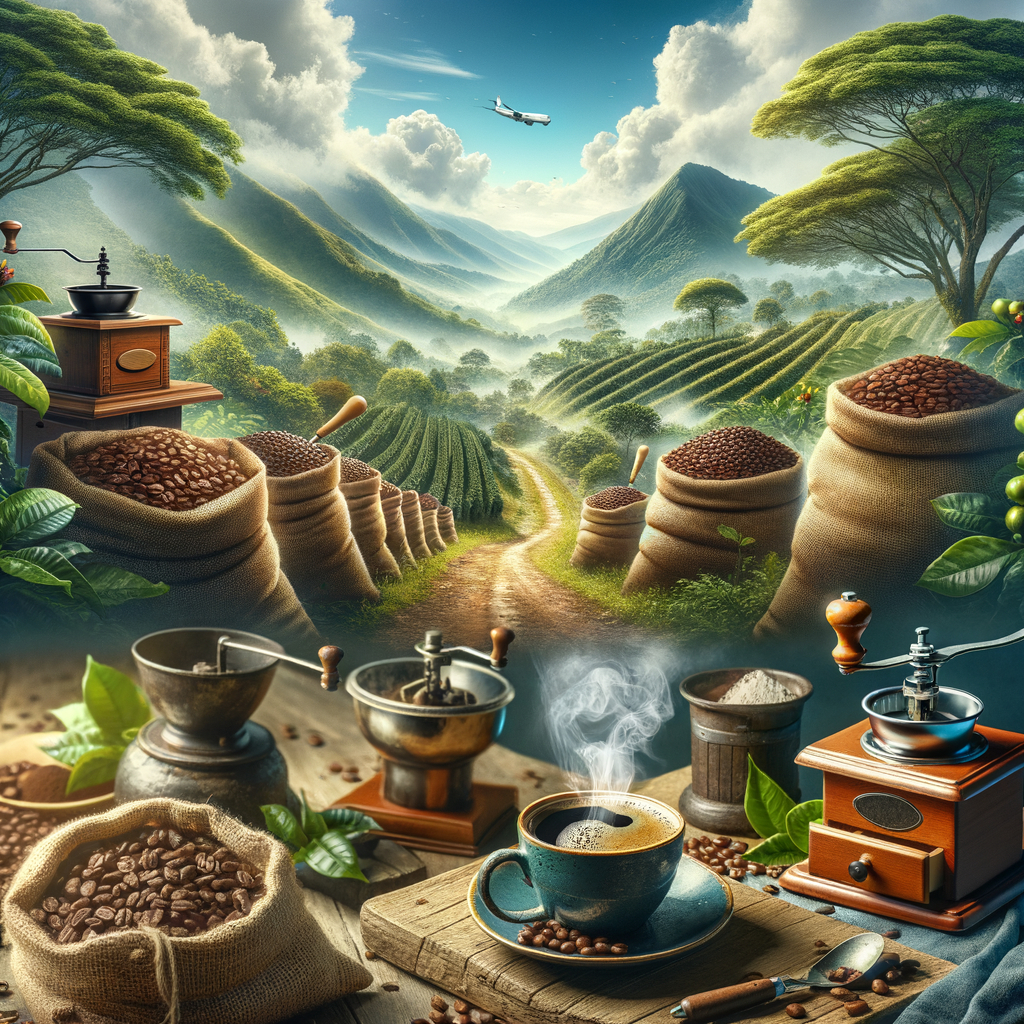Physical Address
304 North Cardinal St.
Dorchester Center, MA 02124
Physical Address
304 North Cardinal St.
Dorchester Center, MA 02124

Imagine waking up in the morning, and the first thing that greets you is the rich aroma of freshly brewed coffee. The scent alone is enough to stimulate your senses and set your day off on a positive note. But have you ever wondered about the journey that these little beans undertake before becoming part of your favourite brew? This article aims to take you through the fascinating process of how coffee transforms from a tiny bean into a cup of revitalising beverage.
Coffee originates from Ethiopia, where it was discovered by a goat herder named Kaldi. He noticed his goats acting unusually energetic after eating berries from a particular tree. Curious, Kaldi tasted them himself and experienced an invigorating effect. Word spread, and soon these magical beans were being cultivated for consumption.
Coffee trees thrive in tropical climates around the equator. They prefer high altitudes, volcanic soil, and just enough rainfall. The trees are planted during the wet season so that their roots can establish themselves before dealing with intense sunlight.
After planting, it takes 3-4 years for a coffee tree to mature fully and produce fruit – known as cherries due to their red colour when ripe. Each cherry contains two seeds or ‘beans’. Harvesting is often done manually due to varying ripening times.
Once harvested, coffee cherries undergo processing either through dry (natural) method or wet (washed) method. The dry method involves laying out cherries under the sun until they lose moisture content whereas the wet method includes removing pulp from cherries then fermenting them in water tanks.
After processing, beans are dried until they reach an optimal moisture level. They’re then hulled to remove the parchment layer (endocarp) from around the bean. The beans are further sorted and graded based on size and weight.
The green coffee beans are then roasted at high temperatures to bring out their flavour profiles. Roasting times vary depending on the desired taste, with light roasts retaining more original characteristics of the bean, while darker roasts develop a stronger, bolder flavour.
Finally, the roasted beans are ground to varying degrees of coarseness or fineness depending on brewing methods like espresso, drip filter or French press. Hot water is added to extract the coffee’s flavours and aromas, resulting in a beverage that’s loved by many across the globe.
With increasing demand for coffee worldwide, it’s crucial to adopt sustainable farming practices. This includes shade-growing (which helps preserve local ecosystems), organic farming (avoiding synthetic pesticides/fertilisers), and fair trade (ensuring farmers receive a fair price).
As consumers, we can contribute by choosing brands that support such initiatives and promote sustainability in their supply chains.
The journey from bean to cup is indeed a fascinating one; it involves several stages each requiring careful attention to detail. So next time you sip your morning brew, take a moment to appreciate the effort that goes into producing every single cup of coffee.